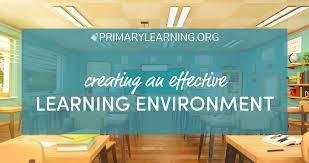The education sector in the USA faced unprecedented challenges during the pandemic. Schools had to quickly adapt to remote learning, altering traditional classroom lcisd classlink dynamics. As students and educators return to physical classrooms, USA schools are evolving to blend the benefits of technology with traditional teaching. This article explores how the educations landscape is transforming post-pandemic.
Embracing Hybrid Learning Models
The integration of education with technology has given rise to hybrid learning, which combines in-person and online instruction. Many schools now offer students the flexibility to attend classes virtually on certain days.
This model promotes accessibility, ensuring that students who cannot attend physically still participate in lessons. Hybrid educational also encourages digital literacy, a vital skill in today’s world.
How Hybrid Learning Enhances Student Engagement
Educators use interactive tools like polls and quizzes during online sessions to keep students engaged. Additionally, students can revisit recorded lectures, reinforcing their understanding of complex topics.
Increased Focus on Mental Health Support
The pandemic brought mental health challenges to the forefront. Schools now recognize the importance of students’ well-being as part of a holistic educations.
Mental health counselors, social workers, and wellness programs are being incorporated into school systems. These initiatives ensure that students receive emotional support, fostering a healthy learning environment.
The Role of Teachers in Supporting Mental Health
Teachers undergo training to identify signs of mental distress among students. Regular check-ins help create a safe space for students to express their emotions.
Redesigning Classrooms for Safe Learning
Classrooms have been redesigned to ensure safety while enhancing educational. Social distancing is maintained, and ventilation systems have been upgraded. Desks are arranged to promote collaboration while maintaining necessary safety protocols.
Classroom Innovations in the Post-Pandemic Era
Movable furniture allows schools to modify layouts based on teaching requirements. Outdoor classes are also becoming popular to provide students with a refreshing learning environment.
Adoption of Personalized Learning Approaches
Personalized learning tailors educations to meet individual student needs. Post-pandemic, schools are using data-driven tools to monitor students’ progress and design customized learning paths.
Students benefit from targeted instruction, helping them overcome learning gaps caused by the pandemic.
How Personalized Learning Addresses Learning Gaps
Teachers use assessment data to identify areas where students need extra help. This focused approach ensures no student is left behind.
Collaboration with Parents and Communities
The role of parents and communities in education has become more prominent. Schools actively engage with parents through regular communication channels and involve communities in school activities.
This collaborative approach ensures students receive consistent support both inside and outside the classroom.
Community Programs that Strengthen Learning
After-school programs and community partnerships offer tutoring services, helping students with subjects they find challenging.
Incorporating Digital Tools for Efficient Learning
Technology continues to shape education post-pandemic. Schools use learning management systems to streamline assignments, grades, and communication between teachers and students.
Interactive tools such as educational apps and virtual labs further enhance the learning experience, making education more engaging.
The Role of AI and Virtual Reality in Modern Education
Artificial intelligence provides personalized feedback, while virtual reality offers immersive experiences in subjects like history and science.
Ensuring Equity in Education
One of the biggest challenges during the pandemic was ensuring equitable access to education. Schools are now committed to closing the digital divide by providing devices and internet access to students in need.
Equity initiatives ensure that every student, regardless of background, receives a quality education.
Government Programs Supporting Equity
Federal and state programs provide funding for schools to improve infrastructure and offer scholarships for disadvantaged students.
Education in the USA is undergoing a major transformation, thanks to advancements in technology. From online learning platforms to AI-powered tools, the way students and teachers interact is evolving rapidly. This article explores the role of technology in reshaping education and what lies ahead for the future.
Technology’s Impact on Modern Education
Technology is at the heart of modern education, offering tools that enhance learning. Students today have access to resources far beyond traditional classrooms, such as virtual courses and interactive learning apps. These innovations promote personalized learning, making education more accessible to students from diverse backgrounds.
Online Learning Platforms Revolutionizing Education
The rise of platforms like Coursera and Khan Academy has enabled students to learn at their own pace. These platforms offer flexibility, allowing learners to balance education with work or personal commitments. Online education is particularly beneficial in remote areas, where access to schools might be limited.
Additionally, during the COVID-19 pandemic, online education kept learning uninterrupted. It proved that education could adapt to challenges and still thrive in a digital format.
The Role of Artificial Intelligence in Education
AI is transforming education by offering personalized tutoring and instant feedback. Tools like AI-based chatbots help answer students’ questions, while adaptive learning software adjusts content based on individual performance. As a result, students receive customized support, ensuring better learning outcomes.
Teachers also benefit from AI-powered tools, which streamline administrative tasks and provide insights into student progress.
Gamification in Education: Making Learning Engaging
Gamification integrates game mechanics into education to increase engagement. With tools like quizzes, leaderboards, and challenges, students find learning fun and rewarding. This approach encourages participation and helps retain information better.
In the future, gamified education may become even more prevalent, combining entertainment with academic learning effectively.
How Virtual Reality and Augmented Reality Enhance Learning
Virtual Reality (VR) and Augmented Reality (AR) offer immersive learning experiences. Students can explore historical sites, conduct virtual science experiments, or practice skills in simulated environments. These technologies bring concepts to life, enhancing understanding and retention.
While VR and AR are still emerging, their potential in education is vast, particularly in fields like medicine and engineering.
Challenges in Integrating Technology in Education
Despite the many benefits, integrating technology in education comes with challenges. Not all students have equal access to digital tools, creating a digital divide. Teachers also need proper training to use new technologies effectively.
Furthermore, excessive reliance on technology may reduce face-to-face interaction, which is crucial for social and emotional development.
The Future of Education in the USA: Blended Learning
The future of education lies in blended learning—a combination of online and offline methods. This approach offers the best of both worlds, giving students the flexibility of digital learning while retaining personal connections with teachers and peers.
Schools and universities are already adopting blended models, making education more adaptable and inclusive.
Conclusion
USA schools have embraced change to overcome the challenges posed by the pandemic. By adopting hybrid models, addressing mental health, and fostering community collaboration, they ensure students receive a well-rounded education. With continued efforts toward personalization and equity, the education system is set to thrive in the post-pandemic world.




